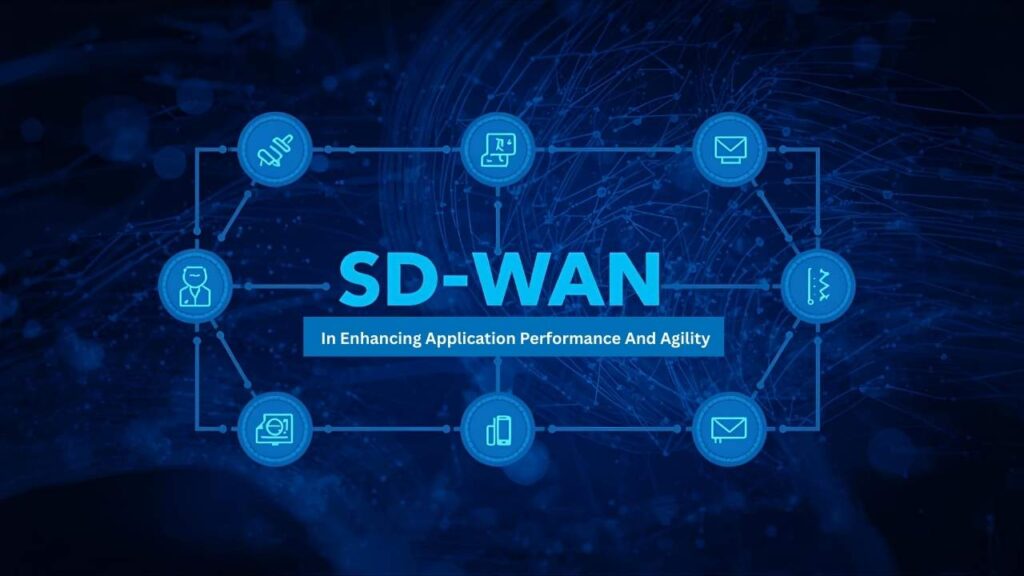Modern enterprises rely on digital applications to drive daily operations, support collaboration, and deliver customer experiences that build loyalty. These applications often operate across dispersed branches, data centers, and cloud platforms, which makes network performance a decisive factor in business productivity. Traditional WAN architectures struggle to keep pace with growing traffic demands, leaving applications vulnerable to latency and disruptions.
SD-WAN brings a fresh approach by intelligently directing traffic across multiple connections and optimizing network paths. This flexibility supports stronger application performance and gives organizations the agility to adapt quickly to shifting demands.

Improving User Experiences Through Smarter Traffic Routing
Enterprises seeking to boost productivity place a high value on application responsiveness. A sluggish experience can stall workflows and frustrate end users. By enhancing application performance with SD-WAN networks, organizations gain the ability to monitor traffic patterns in real time and choose the most reliable paths for data. This approach allows critical applications such as video conferencing, CRM systems, or cloud-hosted collaboration platforms to avoid congestion and maintain consistent quality.
Instead of relying on a single static route, SD-WAN distributes traffic dynamically across available links, which reduces packet loss and improves load balancing. The resulting performance boost creates smoother user experiences that support efficiency across departments.
Strengthening Agility Through Centralized Control
Enterprises often operate across multiple sites, and maintaining consistent network policies across all locations can be complex. SD-WAN provides centralized management that simplifies how policies are configured, deployed, and monitored. Administrators can apply security settings, quality of service rules, and bandwidth priorities to every branch from a single console.
This capability shortens the time needed to roll out new applications or updates across the network. It removes the need for on-site configuration at each branch, which speeds up responses to operational changes. Centralized control also creates a unified view of network health, giving IT teams the context they need to act quickly when issues arise.
Securing Critical Data Through Integrated Protections

A modern WAN must carry sensitive business data between branches, cloud services, and remote users. Any disruption or breach can disrupt operations and damage trust. SD-WAN integrates security into its core architecture through features such as encrypted tunnels, secure gateways, and segmentation. Encrypted tunnels protect data as it moves across public or private links, while secure gateways block malicious traffic before it enters the network.
Segmentation isolates different types of traffic so that a breach in one area does not spread to others. These capabilities combine to create a more resilient environment for critical data without slowing down performance. By incorporating security at the network level, SD-WAN reduces the attack surface while maintaining fast and reliable connectivity.
Supporting Cloud-First Strategies With Direct Access
Many organizations are shifting workloads to public and private cloud platforms. Traditional WAN architectures often route all traffic through a central data center, which adds latency when users access cloud-based applications. SD-WAN addresses this challenge by allowing direct cloud access from branch sites. This local breakout approach shortens the path between users and cloud services, which improves response times and reduces the burden on the corporate data center.
Direct access also prevents congestion at the network core, giving cloud-based tools the bandwidth they need to function smoothly. With more reliable connections to the cloud, employees can use SaaS applications and collaboration platforms with minimal disruption.
Scaling Network Capacity With Flexible Connectivity Options
Expanding network capacity often requires balancing cost and performance. Traditional WANs rely heavily on expensive MPLS circuits, which can be slow to provision and difficult to scale. SD-WAN gives enterprises the freedom to combine different types of connections, such as broadband, LTE, and MPLS. By aggregating multiple links, organizations can expand available bandwidth without being locked into a single provider or circuit type.
SD-WAN continuously monitors link performance and shifts traffic to the best available path. This approach keeps applications running smoothly even during outages or congestion on one connection. The ability to scale capacity with flexible connectivity supports business growth without requiring a full overhaul of existing infrastructure.
Delivering Operational Efficiency Through Automation
Manual configuration and troubleshooting consume significant IT resources in traditional WAN environments. SD-WAN reduces this burden through automation features that handle routine tasks. Automated path selection directs traffic along the most efficient route based on current network conditions.
Policy-driven configuration applies predefined rules to new devices as soon as they are connected, eliminating repetitive setup work. Automated failover reroutes traffic instantly during link failures to maintain continuity. These capabilities free IT teams from constant maintenance, allowing them to focus on strategic projects. The reduction in manual workload lowers operational costs and speeds up network response to changing business needs.
SD-WAN reshapes how enterprises manage and operate their networks by aligning performance, security, and agility in a single framework. By combining flexible connectivity options with automation, SD-WAN creates a network foundation that adapts to growth without adding complexity. Organizations that adopt this approach can build a more resilient and responsive network capable of supporting modern digital workloads across multiple sites and platforms.
